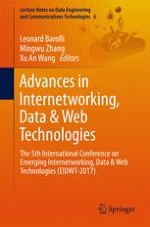This book highlights the latest research findings, innovative research results, methods and development techniques, from both theoretical and practical perspectives, in the emerging areas of information networking, data and Web technologies. It gathers papers originally presented at the 5th International Conference on Emerging Internetworking, Data & Web Technologies (EIDWT-2017) held 10–11 June 2017 in Wuhan, China. The conference is dedicated to the dissemination of original contributions that are related to the theories, practices and concepts of emerging internetworking and data technologies – and most importantly, to how they can be applied in business and academia to achieve a collective intelligence approach.
Information networking, data and Web technologies are currently undergoing a rapid evolution. As a result, they are now expected to manage increasing usage demand, provide support for a significant number of services, consistently deliver Quality of Service (QoS), and optimize network resources. Highlighting these aspects, the book discusses methods and practices that combine various internetworking and emerging data technologies to capture, integrate, analyze, mine, annotate, and visualize data, and make it available for various users and applications.
